Giraffe Facts: The Ultimate Guide to Africa's Tallest Mammal
Introduction: The Majestic Giraffe
Giraffes are undeniable symbols of the African savannah, captivating observers with their towering necks and gentle demeanor. As the world's tallest mammals, reaching heights of up to 18 feet (5.5 meters), these graceful creatures possess remarkable traits that set them apart from all other wildlife.
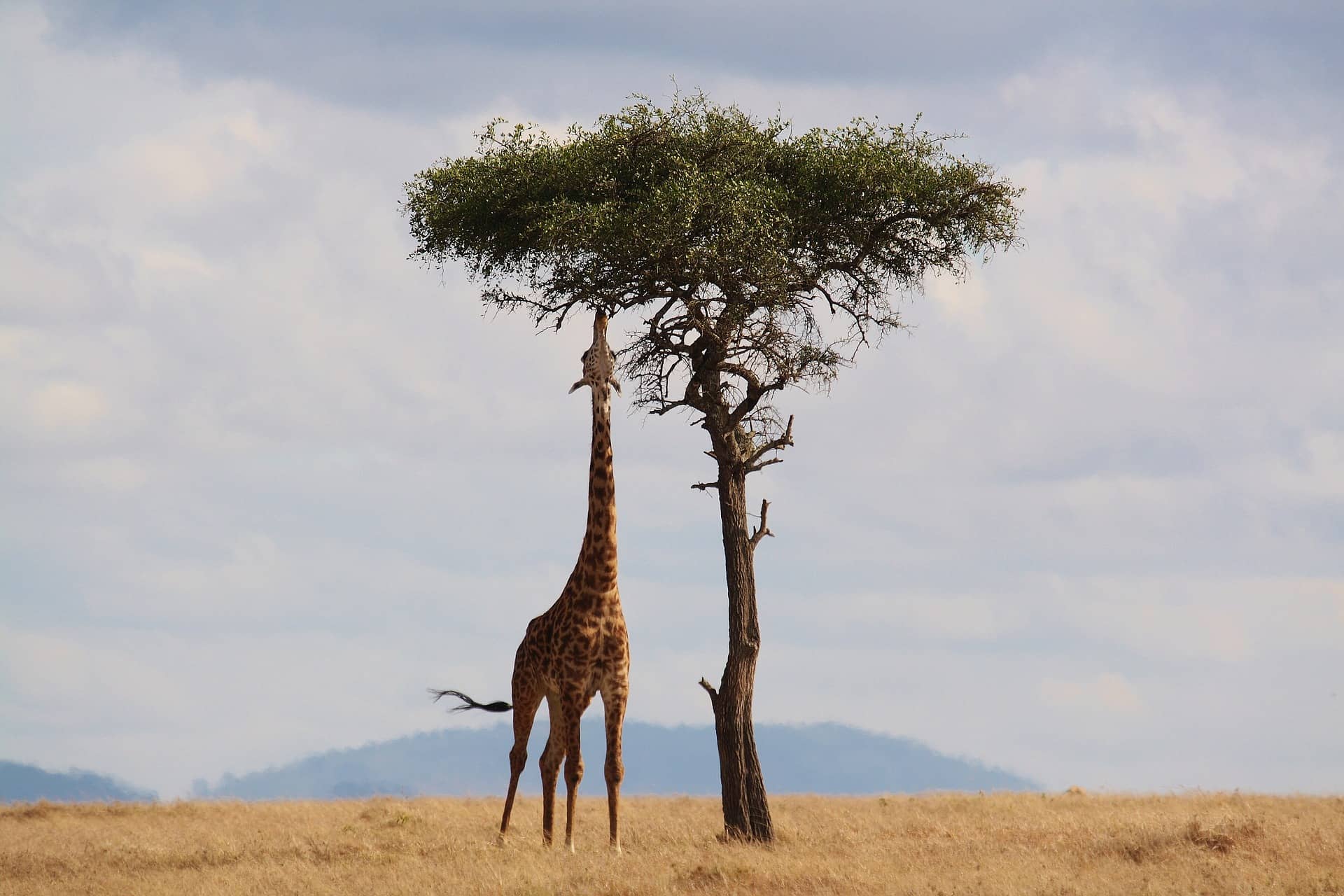 Giraffe facts and information.
Giraffe facts and information.From their distinctive black tongues to their unusual horns, giraffes display behaviors that continue to fascinate researchers and safari-goers alike. This comprehensive guide reveals surprising giraffe facts you've likely never heard before—from their sleeping habits to their fighting techniques.
Where do Giraffes Live?
If you have traveled to Africa one of the most iconic safari images you will see is the silhouette of a giraffe feeding on an Acacia tree.
You will find Giraffes on the plains of the Serengeti and Masai Mara in Kenya and Tanzania, Namibia, Botswana, Zimbabwe, Zambia, and South Africa.
Giraffe habitat
In their natural habitat, these African animals prefer woodland areas.
This is where they will find food trees for them to browse.
They use grasslands only for traveling.
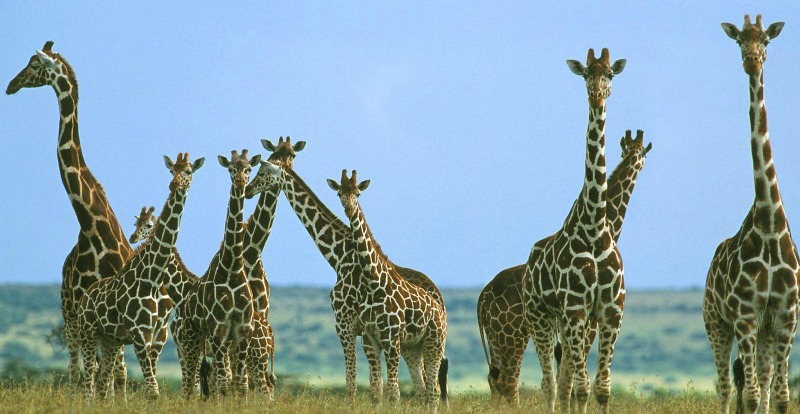
If fresh green food is available, they do not need water.
If that is the case, you are unlikely to see them at rivers and lakes.
They usually feed and move around during the cooler parts of the day in the early morning and late afternoon.
These African safari animals do sometimes feed at night if there is bright moonlight.
You will see them resting in the midday heat, either standing up or lying down.
Do they live in groups?
Yes, you will find them in loose, open herds with no specific leaders which will coordinate the herd movement.
Mature bulls are very mobile and roam alone but will associate with a herd that has a female on heat in it.
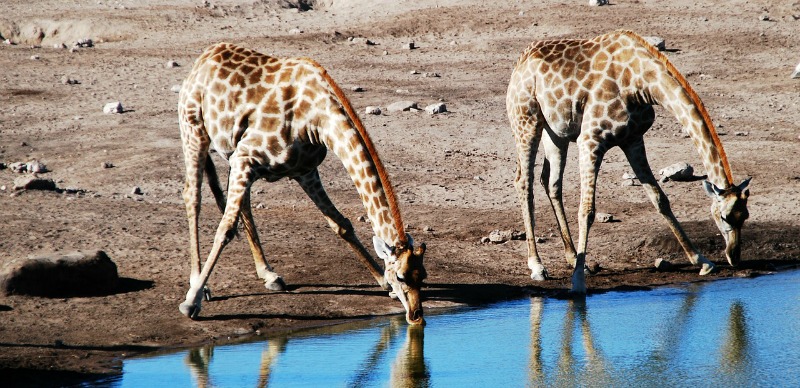
These animals are not territorial and float amongst groups without enduring relationships except for the bond between a mother and a calf.
Fun Fact: A group of giraffes standing still is called a tower. However, a moving group of giraffes is called a journey.
The social interaction, which you are amongst these animals when on an African safari, is necking.
This occurs during courtship, when it involves a gentle, stroking action.
Young adult males spar by neck wrestling when it is a test of strength - each trying to wrestle the other slightly off balance.
To understand dominance hierarchies amongst them look for the dominant animal, which will stand with its head held high.
A submissive one holds its head low and at an angle to its neck and drops its ears.
What do giraffes eat?
These long-necked browsers can exploit a feeding niche in their habitats that is only shared by elephants.
Their height enables them to reach food, which no antelope can get at.
They feed on the Acacia trees.
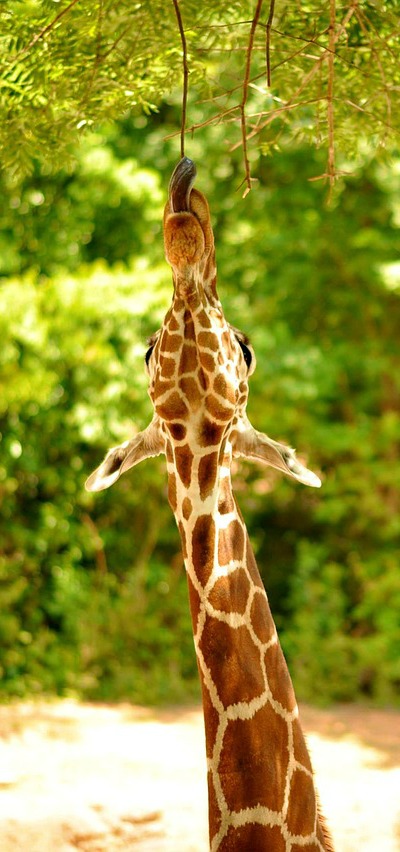
Giraffes are very selective feeders and only chooses the most nutritious leaves.
They do this by pulling leaves and small twigs into its mouth with its lips and tongue.
They sometimes spit out thorns and tough twigs.
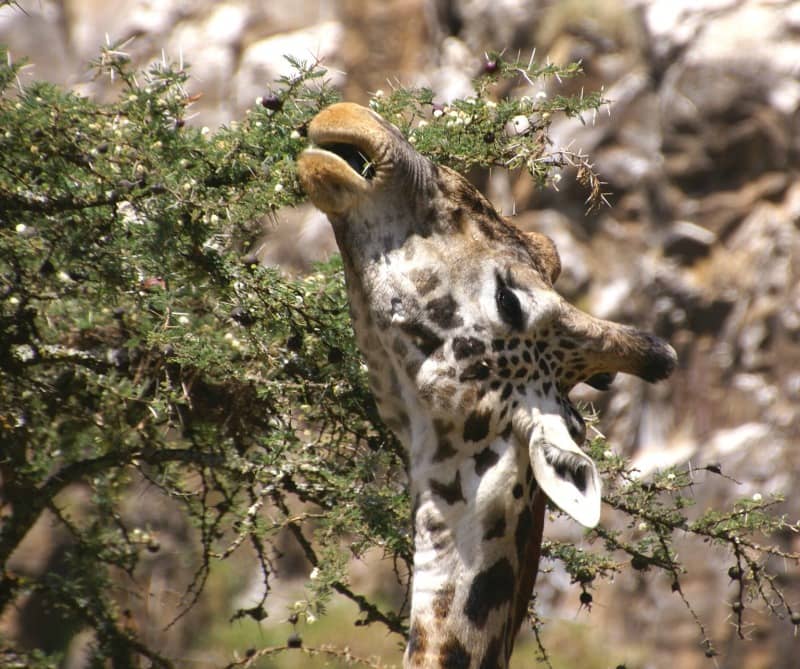
These African animals have a very efficient digestive system.
This means that they can survive on less than half the browse you would expect of an animal of this size.
The presence of thorns on acacia trees slows down this process, which means they must spend at least 11, and up to 20, hours a day feeding.
In habitat areas where the soil is poor in calcium, they obtain these minerals by chewing bones.
Do you know how to see the difference between a male and female giraffe from a distance?
You can differentiate between the sexes because of their different feeding styles.
Males tend to feed at full stretch, reaching up to 5, 8 m from the ground.
Females feed lower with their heads tipped downwards and their necks angled forward to reach the tops of low bushes.
This means that bulls and cows do not have to compete for food.
How tall is a giraffe?
The maximum head height of males is 5,5 meters and 4,5 meters for females.
The shoulder height of males is 3,3 meters and it is 2,8 meters for females.
High-ranking bulls intimidate subordinates by standing with their necks vertical to exaggerate their height and bulk.
Why do Giraffes have horns?
They have a pair of short, thick horns on the top of their head.
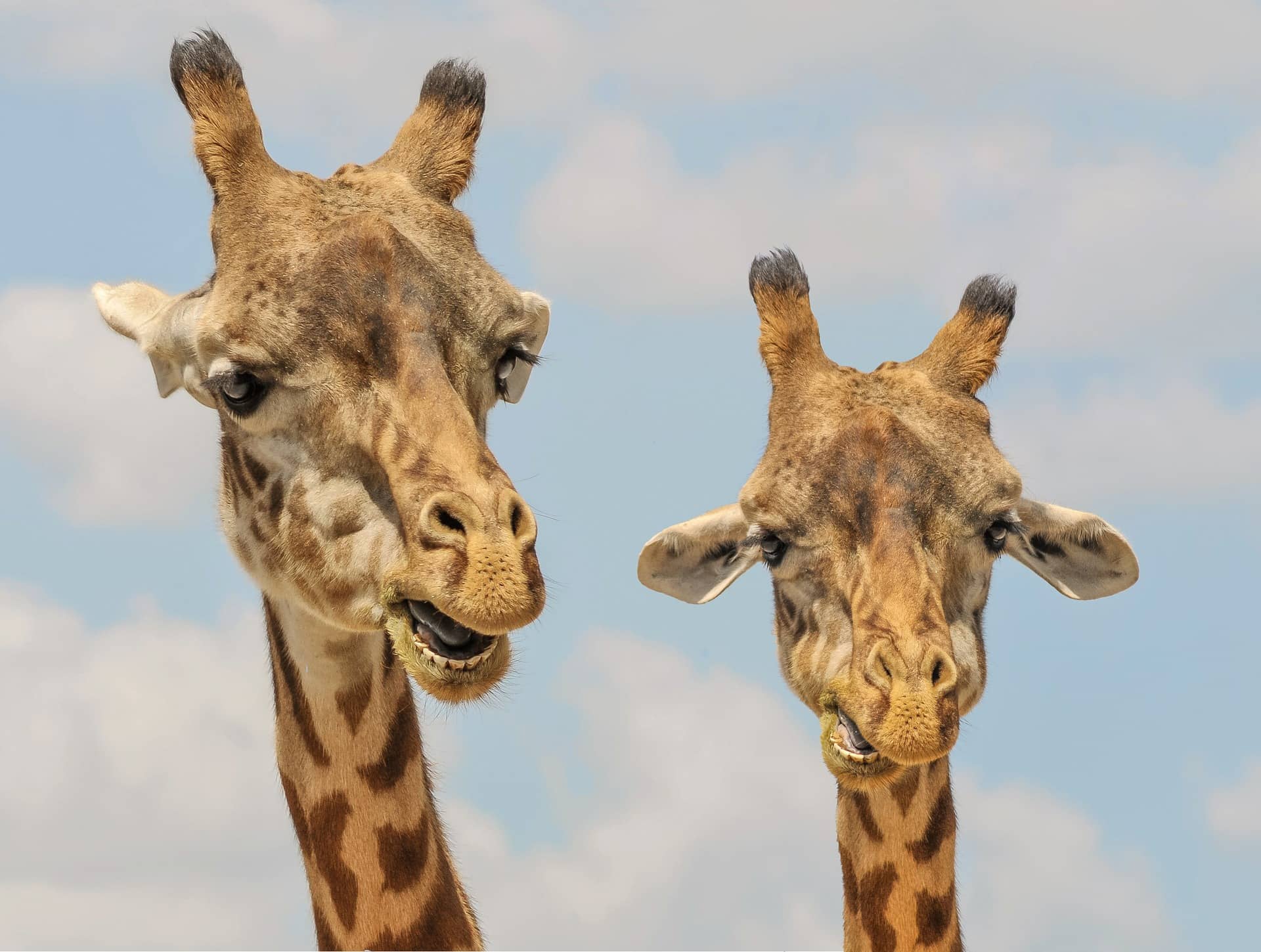
Scientists think this add weight to the head of the male giraffe. This allows them to deliver heavier blows on the body of the opponent with its head during contests.
Why are Giraffe tongues black?
The tongue is up to 45 cm long which together with the dextrous upper lip allows them to get in between the thorns and strip the leaves.
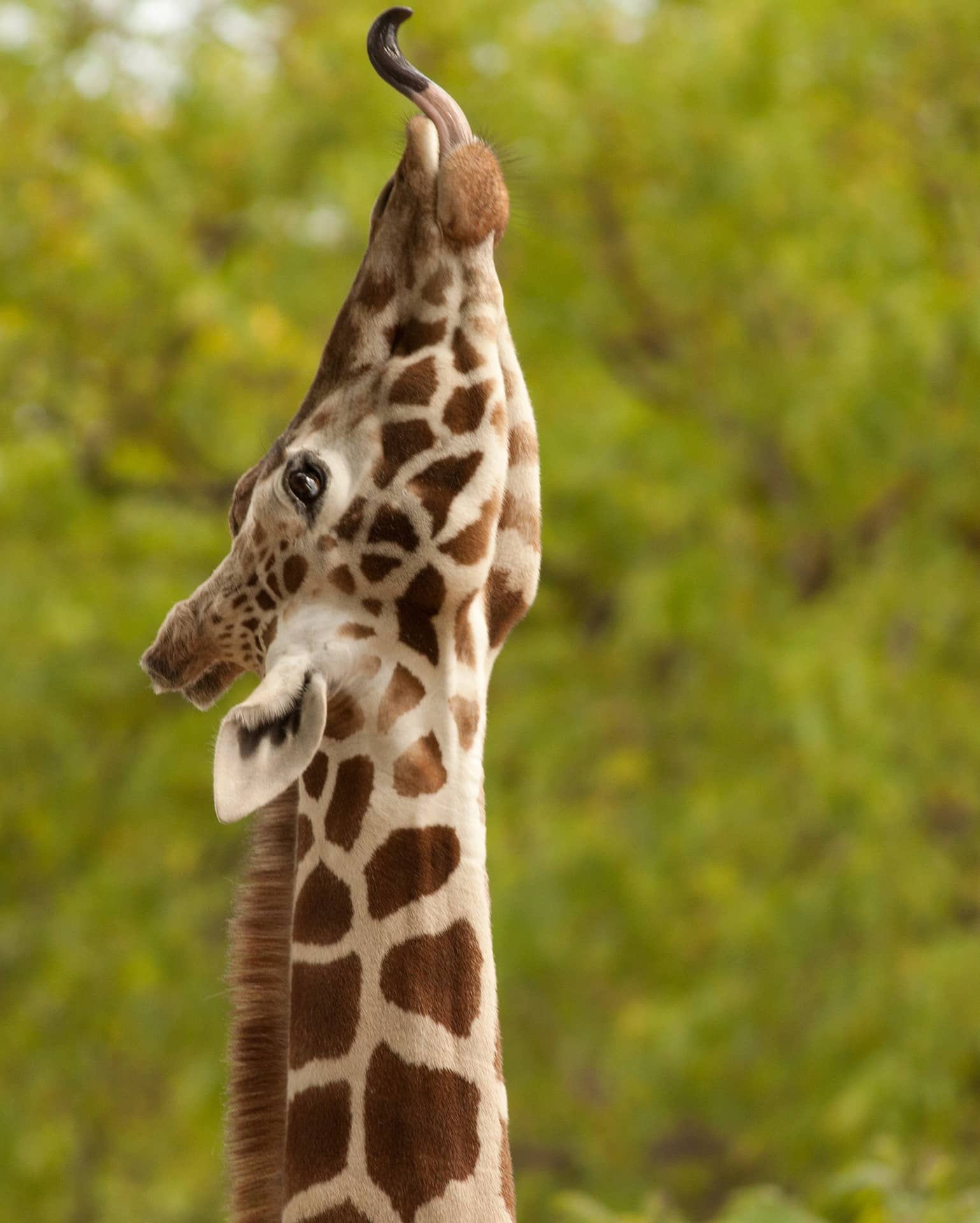
Fun Fact: Giraffes eyelashes allow them to sense when they are getting too close to thorns from prickly acacia trees on which they feed.
|
Eating from a tree with big thorns can be dangerous because you can get your eye poked. |
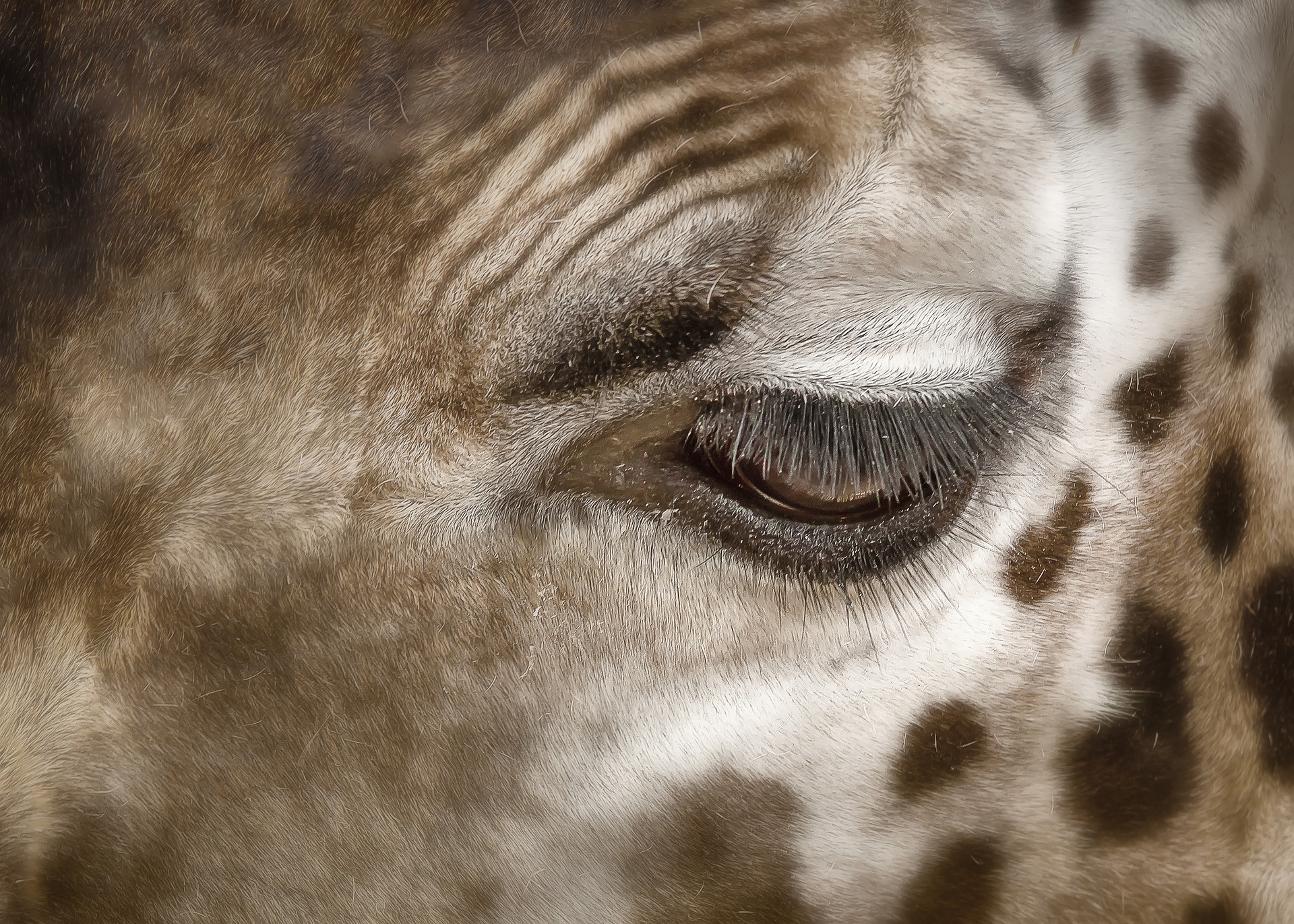 |
How fast can a giraffe run?
They can gallop at up to 34 miles per hour (56 km/h).
When you are on African safari lookout for the very distinctive walking gait of this African animal.
Because its legs are so long a walking they move both right legs forward and then both the left legs.
When they gallop, this changes, and they simultaneously swing the hind legs ahead of and outside the front legs.
How do they groom themselves?
Something you will notice when in the bush is that the build of this animal makes it difficult for it to groom itself.
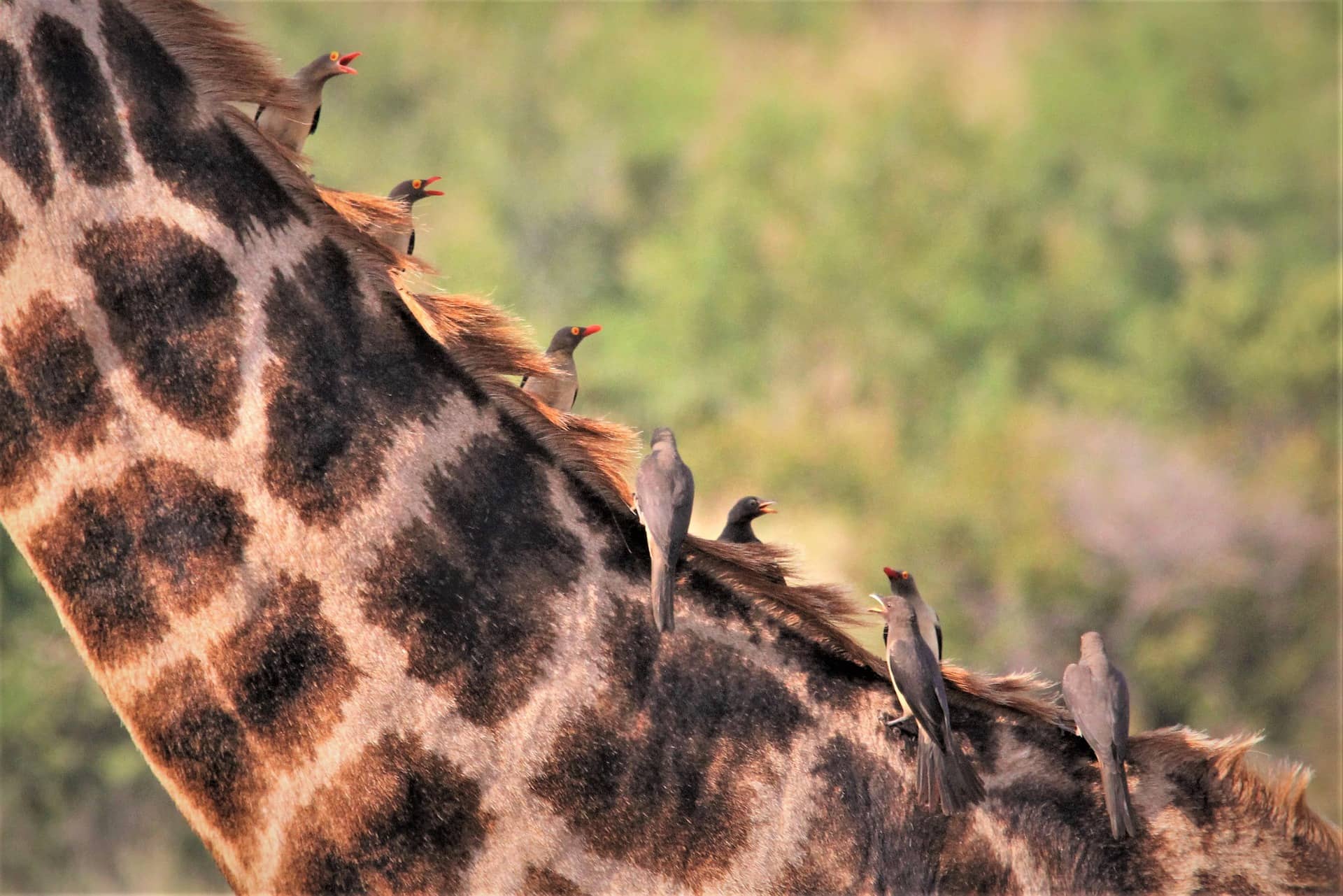
That is the reason they are usually peppered with ticks.
When you see them scratching against trees it is because they are trying to rid itself of these parasites.
How do giraffes fight?
When giraffes fight the bulls swing their heads like medieval maces.
Notice in the giraffes fighting below how the one animal lands a thundering blow on the body of the opponent with its head.
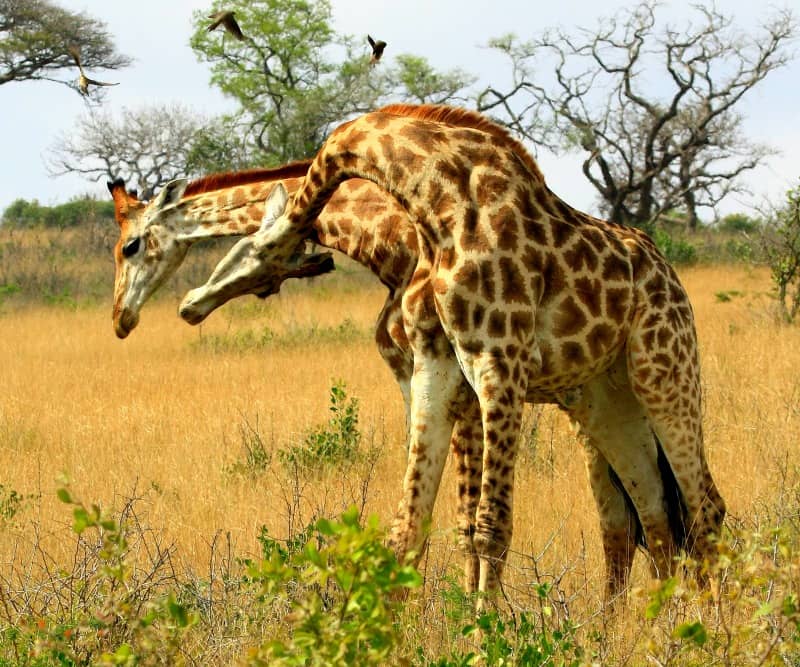
The neck is so long that the swing looks slower than it is and the blows less hard, but the sounds of their impacts can be heard from one hundred0 meters away.
Broken jaws and necks and combatants being knocked unconscious have been recorded.
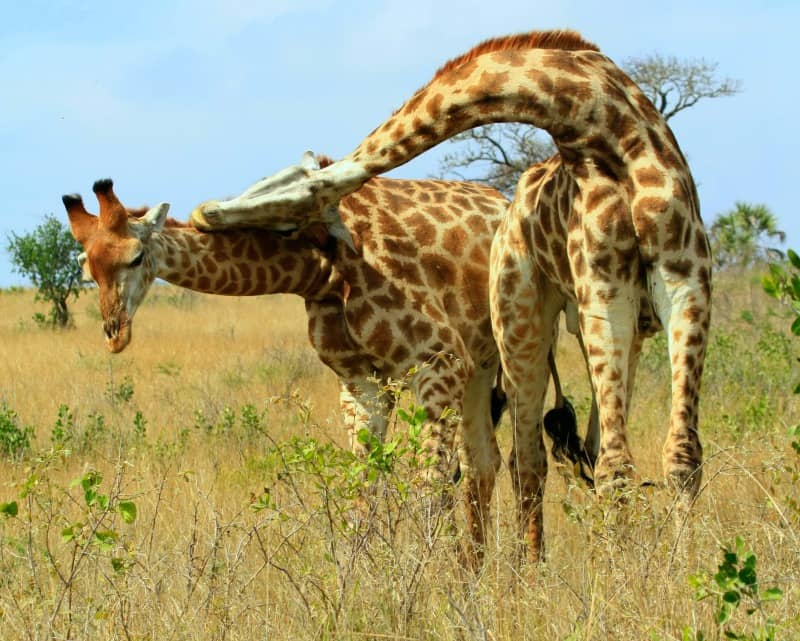
A bull rides the blows of the opponent by jumping slightly at the moment of impact.
They cannot jump and swing at the same time, so the two opponents give the impression that they are taking turns to give and receive blows.
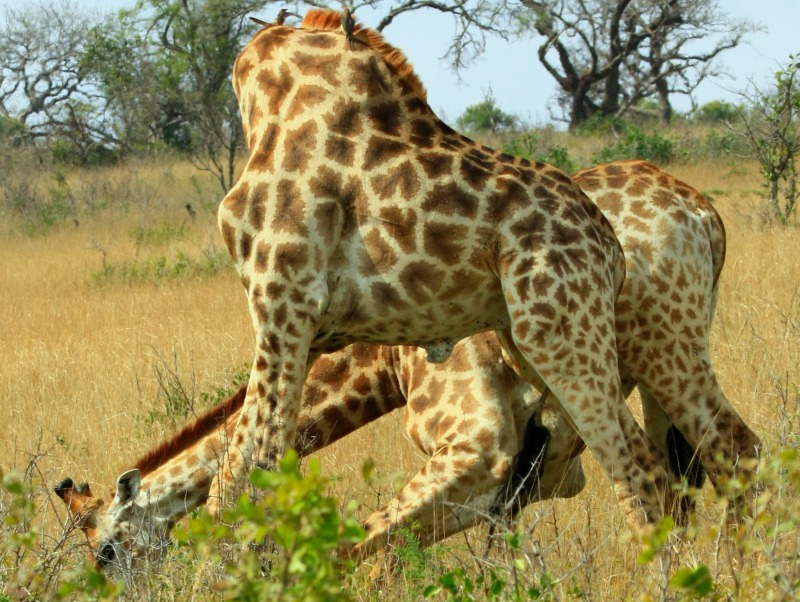
Fights like this can go on for more than half an hour.
After the fight - the winner will emphasize his dominance by briefly mounting the loser.
How do giraffes defend themselves against predators?
Giraffes defend themselves against predators by kicking with either the fore or hind feet.
Their large and heavy hooves can break the back of a lion.
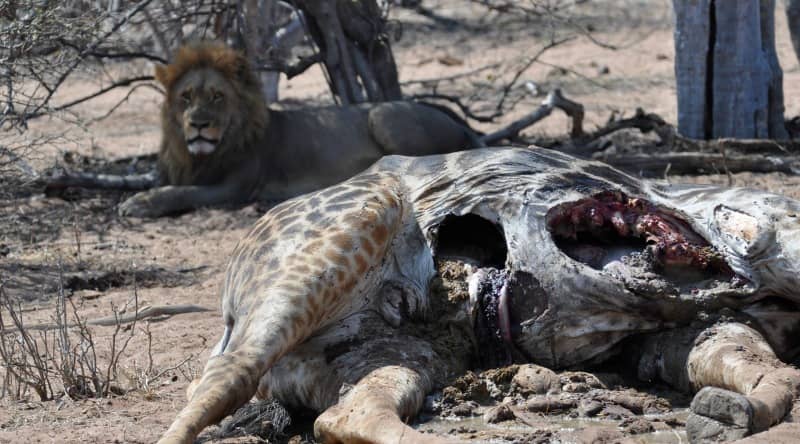
Something interesting information about their vulnerability to predators relates to their feeding habits.
Bulls tend to feed at full stretch with their heads tipped upwards.
This makes them less able to keep watch for predators while feeding.
An interesting giraffe fact shows that in the Kruger National Park lions kill 1,8 times as many bulls as cows.
Can giraffes be dangerous?
Giraffes aren't among the most dangerous or aggressive creatures in Africa.
Like all wild animals, they can be unpredictable. If they feel nervous, and they're known to be easily startled.
The animal's elevated vantage point allows them to notice humans approaching from a distance. It is therefore unlikely that an approaching person can surprise them.
Generally, giraffes are harmless creatures.
Why are giraffes vulnerable when they are drinking water?
They don’t need to drink a lot of water because they get most of their water from the plants they eat.
To reach water, it must splay its front legs and bend its knees before bending its neck to get its head down to ground level.

Any wildlife animal in this position is very vulnerable.
It will always look around carefully and make sure it has a firm footing before bending.
When they raise and lower their heads its brain is protected by a special system of elastic blood vessels in the neck.
This system is effective in getting blood and oxygen to their heads, as well as to prevent blackouts when they lower their heads.
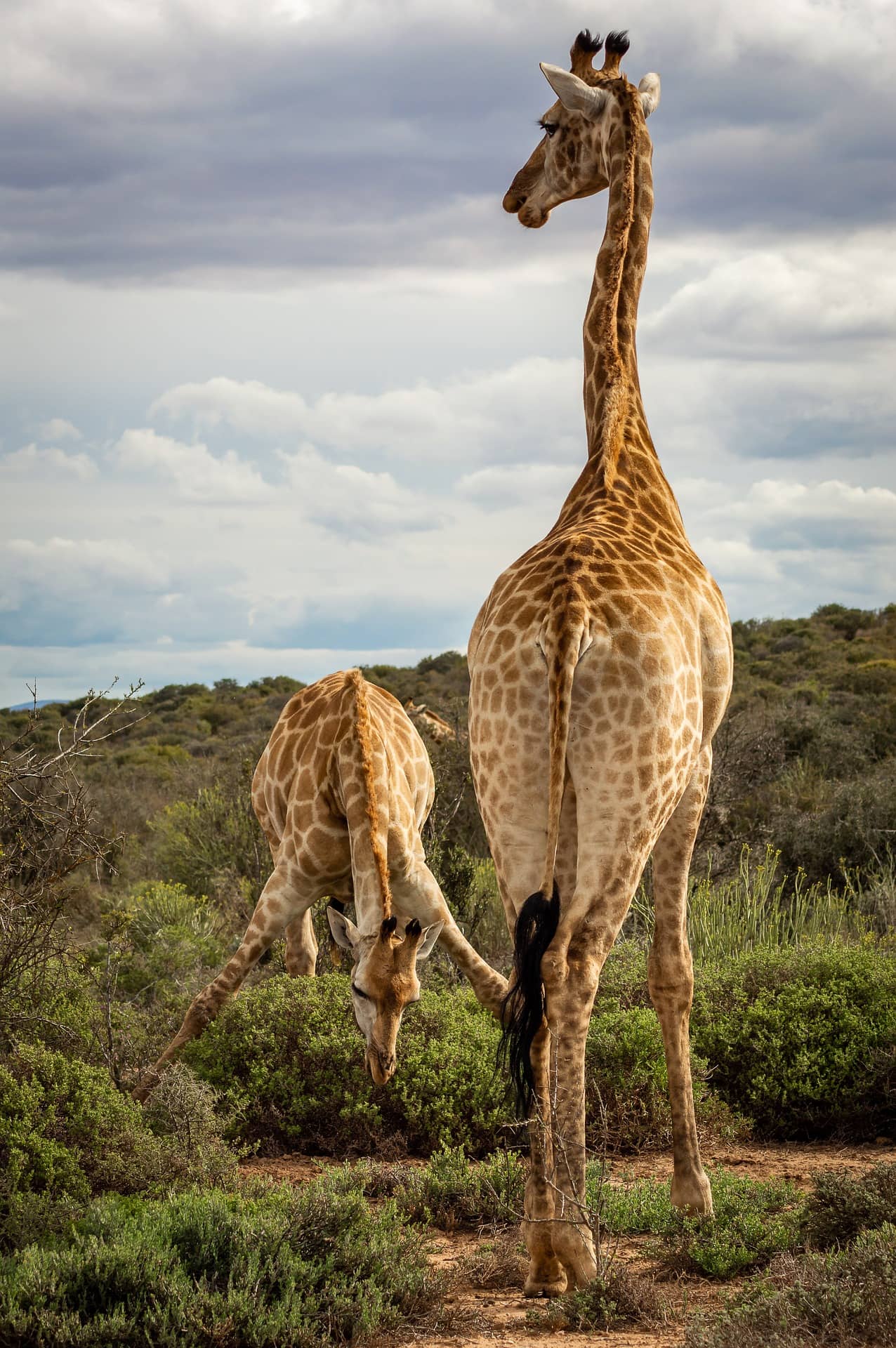
They have enormous hearts, which weigh close to 25 pounds, and large lungs to effectively circulate air through the 6 to 8 feet long windpipe.
Their jugular veins have a series of one-way valves that prevent them from getting a rush of blood to their brains when they bend down.
How do Giraffes sleep?
The giraffe is always very vulnerable to predators.
Because it is not easy for them to lie down or get up quickly, sleeping is a huge inconvenience in their lives.
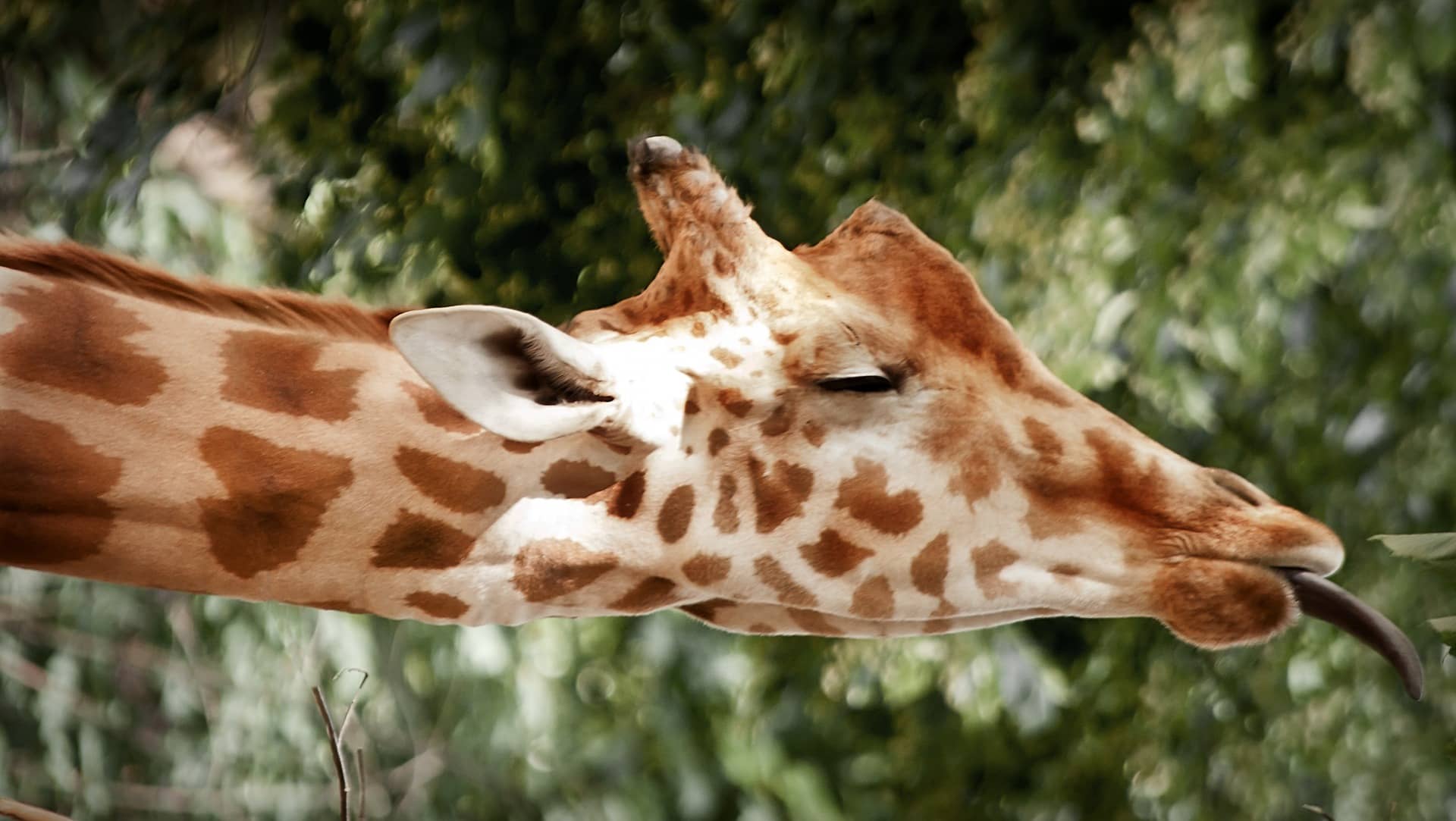
Giraffe needs very little sleep. They have brief naps that last from 5 to 30 minutes.
Adult giraffes sleep standing up but hardly ever sleep for longer than five minutes at a time.
Can giraffes jump?
Interestingly they can hardly jump at all.
The highest fence a giraffe has been recorded clearing was only 1 meter high.
How do Giraffes mate?
A wandering bull tests the reproductive condition of females he encounters by sniffing her urine.
Giraffe gestation period: Giraffe cows are pregnant for about 15 months.
A female that becomes receptive for mating will be approached by a series of increasingly high ranking bulls.
A higher-ranking challenger displaces each suitor.
By the time the female is receptive the top bull will be courting the female.
Copulation is very brief.
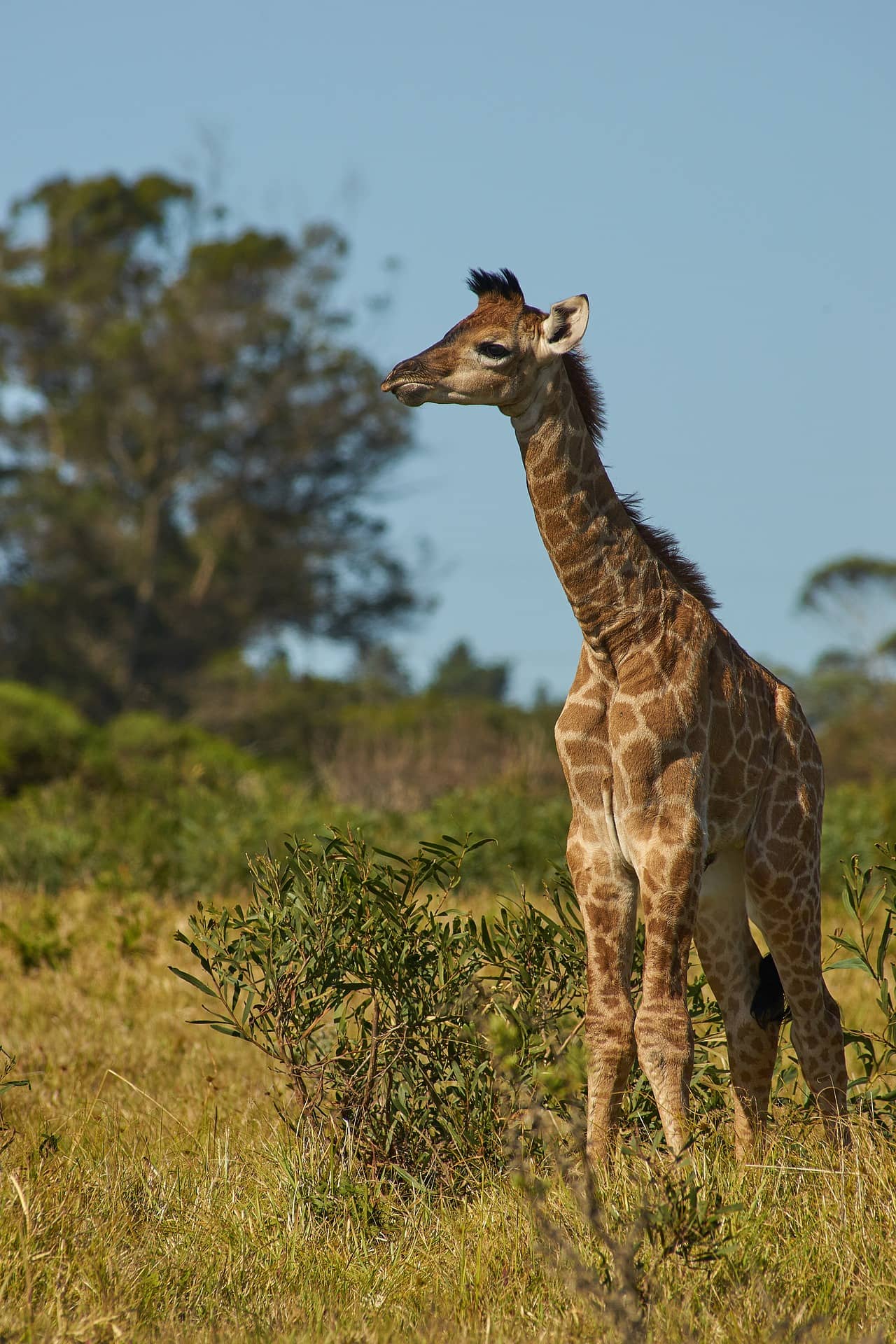
Cows leave the herd to give birth in cover.
In the Serengeti, nearly all the calves are born in traditional calving grounds to which a female will return.
A female gives birth standing up, or even while walking.
At first, the mother chases other giraffes away so that her calf bonds only to her.
The calf can stand within an hour and lie hidden for 1-3 weeks.
While it is still wobbly on its legs its mother guides it with nudges of her head and forelegs.
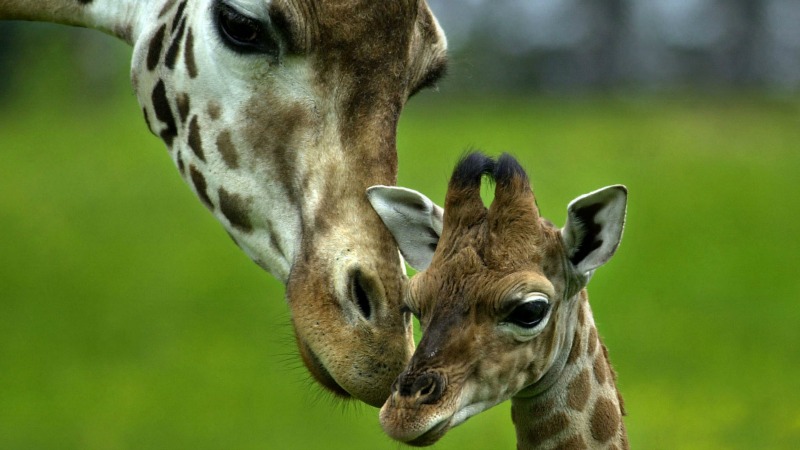
Calves in the same herd establish social bonds by playing with each other.
The baby Giraffe first eats solid food at two weeks.
Baby Giraffes are weaned between 12 and 14 months and leave the mother at 15 to 17 months.
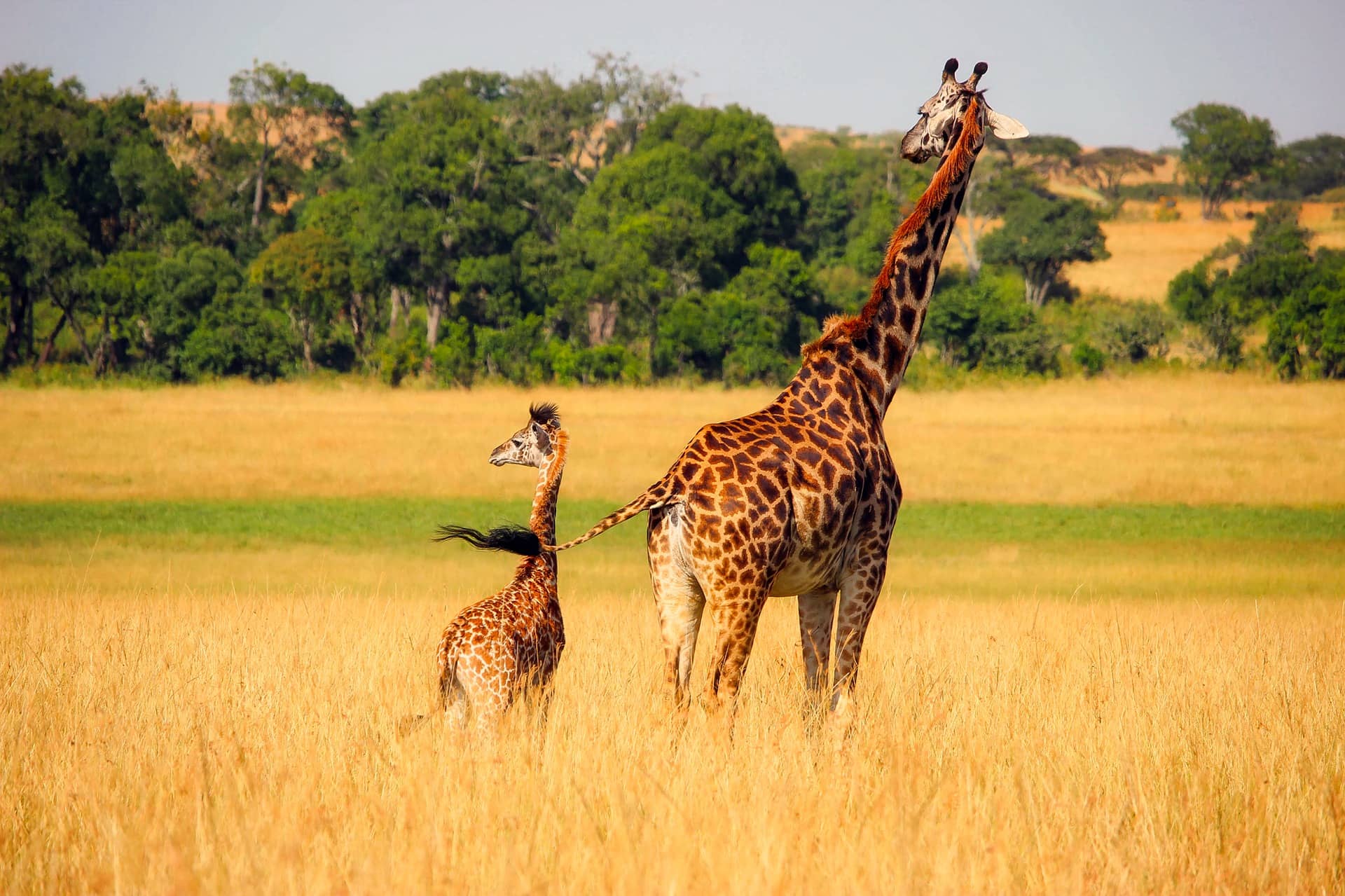
Calves suffer heavy predation and the first-year mortality is 48% in the South African Lowveld.
Why are Giraffes endangered?
The International Union for Conservation of Nature (IUCN) Red List of Threatened Species reveals that Giraffes are in danger.
Surveys show that giraffe populations have declined by 30-40% during the last 30 years (called a silent extinction).
Sadly the main reason for this is human population growth which results in habitat loss and illegal hunting.
Not many people realize that the United States provides a market for the trade-in giraffe parts. It is estimated that 21 000 bone carvings, 3 000 skin pieces ,and 3 700 hunting trophies were imported into the United States during the last 10 years.
Giraffe tails are also used as fly swatters in parts of Kenya and the DRC.
Did you know that these graceful African animals are already extinct in seven African countries?
Please create awareness of these facts by sharing this page with your social media friends.

